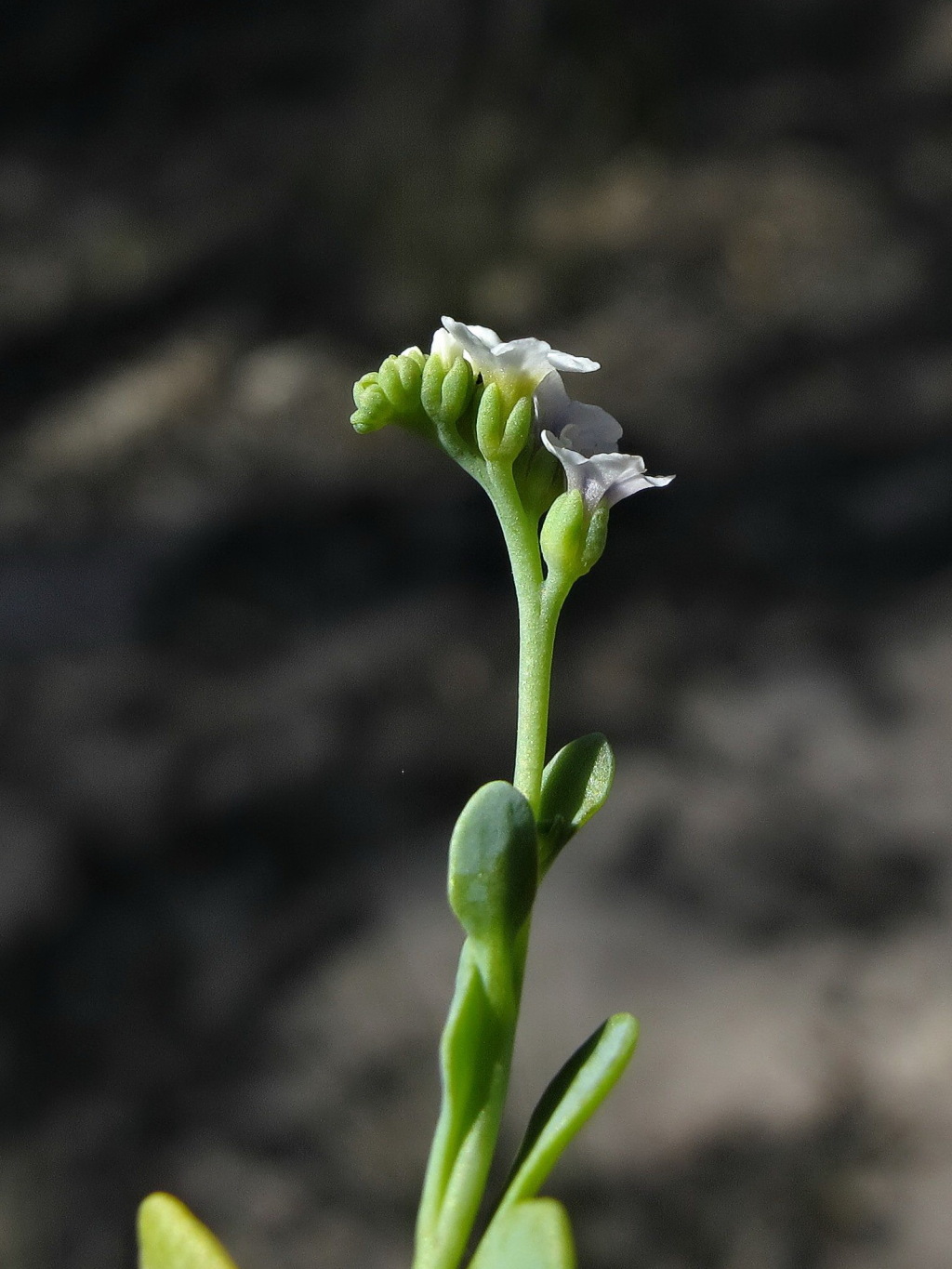Heliotropium curassavicum
L. Smooth HeliotropeAnnual or perennial, prostrate, glabrous, usually glaucous; branches to c. 30 cm long. Leaves narrow-obovate to narrow-elliptic, 6–40 mm long, 2–10 mm wide, fleshy, apex obtuse, base cuneate, margins flat, glabrous; petiole short, indistinct. Inflorescences usually unbranched. Sepals ovate, 1–2 mm long, obtuse, shortly connate, not elongating; corolla 2–3 mm long, glabrous, white to pinkish with a yellow throat, tube c. as long as lobes; anthers acuminate, apices free; style obscure, stigma c. 0.25 mm long, pubescent. Mericarps 4, succulent at first, dry and falling at maturity, glabrous, rugulose, brown. Flowers Oct.–Apr.
LoM, MuM, Wim, VRiv, MSB, RobP, MuF, HFE. Naturalized all mainland States. Native to South America. A weed primarily of saline flats in the north-west of the State.
Although conventionally regarded in Australian literature as a post-European-settlement introduction, Craven (1996) raised the likelihood of it being either truly native or having been introduced prior to European settlement.
Jeanes, J.A. (1999). Boraginaceae. In: Walsh, N.G.; Entwisle, T.J., Flora of Victoria Vol. 4, Cornaceae to Asteraceae, pp. 387–411. Inkata Press, Melbourne.
 Spinning
Spinning


